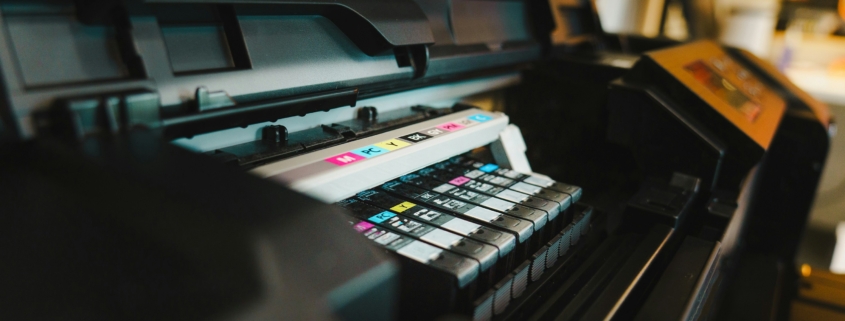Printers, Scanners, Fax Machines: What You Need to Know
For decades, businesses have depended on printers, scanners and fax machines to support operations. All these technologies have evolved significantly from their earliest forms.
Today, these technologies are better than ever for business environments.
Printers
Dot matrix printers were the first printers seen in an office. They were introduced in 1925 and represented a new opportunity for businesses to produce some of their own printing on demand. The problems with dot matrix printers were that they were noisy, slow, the fonts were difficult to read, and the continuous paper they used was difficult to work with.
In 1951, commercial inkjet printers became available, and they were configured to print from PCs in the 1970s. However, it wasn’t until the 1990s that inkjet printers started to print in color. As improved nozzle and inks evolved over time, the inkjet printer became a standard for quality local color printing.
When laser printing came onto the scene the 1970s, it was used for high-quality printing at a time when inkjet printers were still somewhat primitive. Today, businesses use laser printing for high volume, fast turnaround print projects.
As print technology has evolved, new capabilities appeared. For example:
- Standalone inkjet printers became integrated with scan and fax capabilities to create all-in-one machines that combined several functions into a piece of equipment with a relatively small footprint.
- Speed increased and transitioned from being described in characters per second to pages per minute.
- Connections to PCs increased in speed, and now printers can connect to smartphones and laptops using Wi-Fi.
- Printer sizes shrunk to the point where you can now find printers that are easily portable and often used by employees who spend most of their time out of the office.
- 3D printing is now available for specific applications where designers or engineers want to create a replica of a 3 dimensional design for product design, engineering prototypes, and more.
Scanners
Scanners started out as huge drum scanners that were used by service vendors to satisfy the demand for transferring printed documents to some form of media. When flatbed scanners became popular, every business could use one. From that point, the technology evolved rapidly.
All-in-one office products included scanners along with printers and fax capabilities in one piece of office equipment.
Portable scanners are perfect for people working in the field. They incorporate scanning ability in a piece of equipment that can be as small as 11-inches x 3.5-inches x 2.6-inches and weigh less than three pounds. Today’s portable scanners can scan in color, connect to other technology via Wi-Fi, scan 25 pages per minute, and run on rechargeable batteries or a USB connection.
Handheld scanners are in heavy use by companies that maintain inventory or produce a physical product. Warehouse and production personnel use handheld scanners to pick products for shipment, track jobs and more. The newest handheld scanners can read 1D and 2D barcodes, expanding the number of businesses that can use them.
The retail industry uses smartphone scanners to help employees check inventory levels and answer customer questions on the retail floor.
Fax Machines
Early fax machines would send a document from one location to another. However, they weren’t popular due to the coated continuous paper that was difficult to use and deteriorated quickly. Once fax machines started using standard printing paper, it was easy to incorporate the technology into all-in-one business equipment.
Today, fax is still in use, even in light of the ability to transfer information electronically. Some industries won’t accept electronic signatures for important legal documents, for example. Other businesses that transmit highly sensitive information see faxing as more secure than sending even encrypted data electronically.
The big change is a move from physical machines to faxing through the cloud. Besides taking less time, using a cloud fax system avoids the problem of someone accessing sensitive information because it was sitting in hard copy form at a fax station.
Final Thoughts
Printers, scanners and fax machines have been the workhorses of the business world for a very long time. However, if you keep up with the technology as it evolves, you’ll find that the latest technology provides capabilities that make them more useful than ever. If you’re evaluating new technologies and have questions, feel free to reach out to us.



